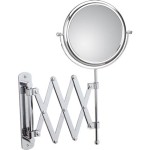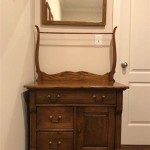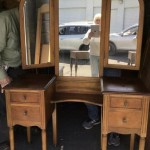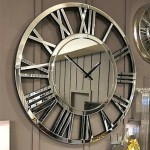DIY Mirror TV Frame: A Comprehensive Guide
A mirror TV frame offers a sleek, modern solution for concealing a television when not in use. By reflecting the surrounding room, the mirror seamlessly blends into the décor, transforming the television from a focal point to a discreet design element. This article provides a comprehensive guide for constructing a DIY mirror TV frame, covering essential materials, construction techniques, and design considerations.
Essential Materials and Tools
Before embarking on the project, gathering the necessary materials and tools is crucial for a smooth and efficient process. The primary component is a two-way mirror, also known as a dielectric mirror or partially reflective mirror. This specialized mirror allows a certain percentage of light to pass through, revealing the television screen behind it when activated. The frame itself can be constructed from various materials, including wood, metal, or plastic, depending on the desired aesthetic and budget. Additional materials include adhesive, screws, measuring tape, a level, a saw (appropriate for the chosen frame material), and safety glasses.
Choosing the right two-way mirror is paramount. The reflectivity percentage dictates the balance between mirror functionality and screen visibility. Higher reflectivity results in a better mirror effect but can diminish the clarity of the television image. Lower reflectivity provides a clearer image but compromises the mirror's ability to blend seamlessly with the surroundings. Consider the ambient lighting conditions in the room when selecting the appropriate reflectivity.
Construction Techniques
The construction process begins with accurate measurements of the television screen. The frame's internal dimensions should precisely accommodate the screen, leaving minimal clearance to prevent light leakage. Once measurements are taken, the frame material can be cut accordingly. Precision is key during this stage, as any discrepancies can affect the final appearance and functionality.
After cutting the frame pieces, they should be assembled using appropriate joinery techniques. Wood frames can utilize wood glue and screws, while metal frames might require welding or specialized fasteners. Ensure that the assembled frame is square and structurally sound before proceeding to the next step. A level is essential for verifying accuracy during the assembly process.
Mounting the two-way mirror is a critical step. Specialized mirror adhesive provides a secure and even bond between the mirror and the frame. Apply the adhesive evenly to the frame's inner edges, ensuring full contact with the mirror. Carefully position the mirror onto the frame, applying gentle pressure to ensure proper adhesion. Allow adequate drying time according to the adhesive manufacturer's instructions.
Design Considerations
Beyond the functional aspects, aesthetic considerations play a significant role in the overall success of the project. The frame's design should complement the surrounding décor. A simple, minimalist frame might be suitable for a modern setting, while an ornate frame might be more appropriate for a traditional interior. The frame's finish, whether painted, stained, or left natural, should harmonize with the existing color palette and textures.
Integrating the frame with the surrounding environment requires careful planning. Consider the placement of the television and its relationship to other design elements in the room. The frame should blend seamlessly into the wall, creating a cohesive and aesthetically pleasing appearance. Concealing cables and wires further enhances the illusion of a simple mirror, maintaining the clean and uncluttered look.
Lighting plays a crucial role in the effectiveness of the mirror TV frame. Ambient lighting conditions should be considered during the planning phase. Excessive light directly on the mirror can diminish the reflectivity and reveal the television even when it's off. Conversely, insufficient lighting can hinder the viewing experience when the television is on. Strategic placement of lighting fixtures can optimize both the mirror's functionality and the television's visibility.
Ventilation is another important factor to consider, particularly for larger televisions that generate significant heat. Incorporating ventilation into the frame design prevents overheating and ensures the longevity of the television. Small gaps strategically placed within the frame can provide sufficient airflow without compromising the aesthetic integrity of the design.

How To Make A Mirror Tv Step By Instructions

Diy Mirror Tv Instructions
Mirror Overlay Kit Tv Pro Display

Diy Mirror Tv Instructions

Samsung Mirror Tv Design Your Perfect Framed Dielectric Frame Diy Over Fireplace

How To Make A Mirror Tv Step By Instructions

Diy Mirror Box To Hide Mounted Tv Framed Living Room Wall Decor

How To Make A Framed Mirror Tv Complete Guide

Diy Frame For A Tv The Turquoise Home

Easiest Diy Tv Frame Ever Quick Tutorial








